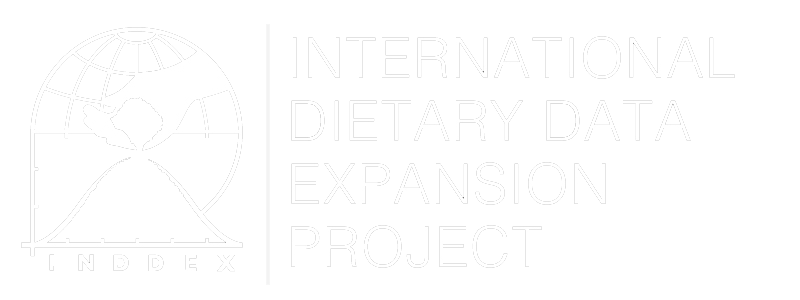Market-Level Food Diversity Score
Overview
Food markets, rural or urban, are significant in determining access to, and consumption of, diverse foods. Food (or dietary) diversity can be captured at different levels of the food supply chain: in production, through on-farm diversity scores, in consumption, through metrics like the Household Dietary Diversity Score (HDDS), and in food markets, through market-level food diversity scores that represent the range of foods or food groups available for purchase.
Market-level food diversity is often defined as an index of the number of distinct foods or food groups available in a local market at a given point in time (Pingali & Ricketts, 2014) or across seasons and agroecological zones (Ambikapathi et al., 2019).
Metrics of market diversity present an opportunity to understand and quantify a key aspect of the food environment that influences household and individual purchasing decisions and, ultimately, diets. Such metrics are considered here to be 'emerging' because most of them are not yet widely used or validated outside a few localized research contexts.
Method of Construction
There is not one accepted approach to calculating a market diversity score, though most researchers have approached the task similarly, modeling it after the way that consumption diversity scores have been constructed. For instance, Pingali and Ricketts (2014) generated a market-level food diversity score using the same basic method as the household dietary diversity score (HDDS). That is, the same 12 food groups that are used in the HDDS (Swindale et al., 2006) were used to count the number of food groups available in a local marketplace and develop an unweighted score. Ambikapathi et al., (2019) used a survey method where they asked vendors and agents, at the village level in Ethiopia, to collect data on monthly food availability and food prices for nine food groups similar to the MDD-W indicator. They classified low market food diversity as the availability of four or fewer food groups in the market. Bellon et al., (2016) took a different approach in calculating market diversity through a 7-day food frequency questionnaire to identify the foods that were purchased from the market, which offers a picture of 'purchase diversity' rather than market diversity, per se.
Uses
The market-level food diversity score can strengthen assessments of food availability by integrating the availability of a wide variety of foodstuffs into a single metric. Coupled with other data, it can provide a snapshot of whether households with market access consume diverse diets or not, or why production diversity and dietary diversity are not always correlated in circumstances where market access and food diversity in markets are ample. Household market access has been shown to be positively associated with household diet diversity, but this relationship depends on properly functioning markets (see Sibhatu et al., 2015). This metric could be used to identify markets that are lacking in diverse foods, which could prompt further analysis and identification of areas of agricultural production and market-level mechanisms that need greater investment to improve market function (Pingali & Ricketts, 2014). A market-level food diversity score could also be used to monitor and evaluate interventions that aim to improve market function and availability of diverse foods.
Strengths and Weaknesses
The market data are relatively straightforward to obtain and the scores are typically constructed as a simple, unweighted count of food groups that is mathematically simple to calculate and report.
A feature of market-level food diversity, in certain contexts like remote rural areas, is the seasonality of agricultural production and the variability in the availability of foods across seasons (Nandi & Nedumaran, 2022). In such contexts, the score would need to be re-measured seasonally to obtain an accurate picture of these dynamics.
A consideration in using the market-level food diversity indicator is that it provides insights into what foods are available in the local markets but is not a proxy for the diet quality of the individuals who purchase food from the market since what is purchased may not always be consumed and not all foods consumed are purchased. It is also challenging to apply the food market diversity score to online food environments that cater to individuals beyond physical markets' catchment areas.
While the metric of market-level food diversity has a range of uses, there is still plenty of opportunity to innovate in the construction and application of this type of metric. For instance, such metrics could be combined with metrics of the cost and affordability of foods and diets to obtain a more comprehensive picture of both the availability and affordability aspects of food environments.
Data Source
Data to construct market diversity scores can be collected through purposely designed tools integrated into primary market surveys or derived from repositories of market monitoring data, such as those maintained by many ministries of agriculture. These data are not always reflective of very small or localized markets - if such markets are the focus then primary data collection might be necessary. To make use of this information in relation to food consumption, additional information is needed related to where individuals or households purchase food and how much of what is purchased is eventually consumed.
Links to Illustrative Analyses
- Nandi, R., & Nedumaran, S. (2022). Rural Market Food Diversity and Farm Production Diversity: Do They Complement or Substitute Each Other in Contributing to a Farm Household’s Dietary Diversity? Frontiers in Sustainable Food Systems.
- Gupta et al. (2020). Market access, production diversity, and diet diversity: Evidence from India. Food and Nutrition Bulletin.
- Muthini et al. (2020). Subsistence production, markets, and dietary diversity in the Kenyan small farm sector. Food Policy.
- Ambikapathi, R., et al. (2019). Market food diversity mitigates the effect of the environment on women’s dietary diversity in the Agriculture to Nutrition (ATONU) study, Ethiopia. Public Health Nutrition.
- Zanello et al. (2019). Buy or make? Agricultural production diversity, markets, and dietary diversity in Afghanistan. Food Policy.
